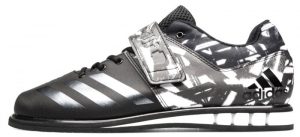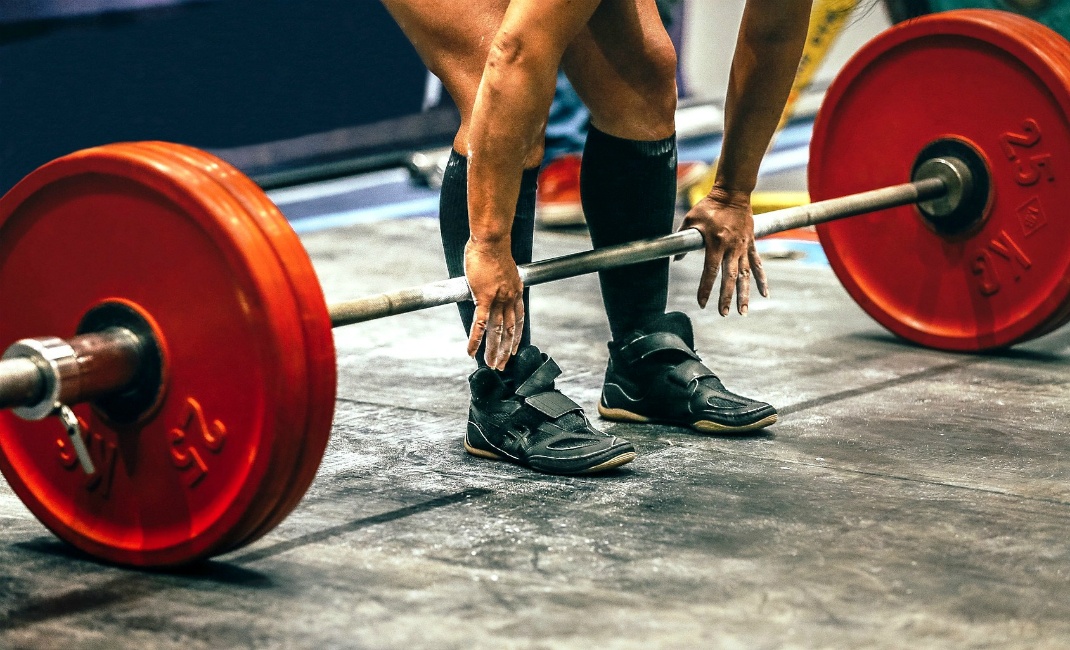
Powerlifting shoes are, beyond a shadow of a doubt, the most important piece of equipment when progressing towards elite levels of strength. Some exercises call for a belt, and some call for wrist wraps—but all demand a solid, powerful shoe that provides the base for maximal force production.
If you’ve ever had the chance to squat, bench press, or deadlift with the proper attire, you can attest to this fact first hand. Lifting in running shoes just never feels the same. In fact, our coaches have allowed several clients to test out footwear at our Las Vegas gym and every single time they literally tell us we “ruined” them—they just couldn’t imagine lifting in anything else after taking them for a test drive.
But with so many options and new models released all the time, how can you be sure which to select? Luckily, by understanding the most important features, you can acquire a pair that works phenomenally without taking your bank account for a workout.
While you can use the same pair for all three lifts, as we will explain further below, you will be much better off by picking up three distinct types of shoes for the three different lifts: squat, bench press, and deadlift. This is because each lift requires an altered design to provide the absolute best biomechanical positioning. In other words, you want your shoe to put your body in the most powerful position possible—and you want that position to be tailored to each lift specifically.
What 3 Factors are Critical for Powerlifting Shoes?
There are three critical aspects to any powerlifting shoe that must be met; keep these 3 tips at the forefront of your mind:
- Zero compression of the sole: as you drive your feet into the ground, you want force to transfer directly into the floor. To explain this with physics, the normal force is what you are attempting to maximize—that is the amount of force the ground is returning to your body. In a perfect world and closed system, the normal force would equal the force with which you push and drive your legs into the ground. Unfortunately, we don’t live in a perfect world or a closed system. The best we can do, then, is to choose a shoe with as little compression as possible—the more compression, the more force will be “leaked” into the shoe and lost.
- High stability to reinforce the foot in all areas: while completing a lift, the last thing you want to happen is for your shoes to slip or allow your foot to shift. As you push against the ground you need to be absolutely confident that your foot will not budge and instead provide the powerful, non-compressed base from which to drive against. Remember, everything starts with the feet and the more force you can preserve while driving, the more you will be able to lift. It’s that simple.
- Metatarsal strap for increased fit and stability mid-lift: stability is critical and a metatarsal strap is there to make it happen. A critical aspect of any true powerlifting footwear, the strap “pulls” your foot into the shoe to ensure there is absolutely zero movement even when maximal flexion of the shoe in the bottom portions of the squat and deadlift. Lastly, it helps to prevent pronation and supination of the foot during near-maximal loads; you do not want your foot shifting to the side in the bottom of a max attempt squat—unless you enjoy riding to the ER in terrible pain. It is less critical for bench press; but as mentioned above, once you try on a pair with a metatarsal strap you will not want to go back.
As long as these qualities are met in the powerlifting shoes you choose, you will be able to train effectively and show up ready to dominate on meet day.
Best Squat Shoes for Powerlifting
When it comes to the best possible squat shoes for powerlifting, you have two options:
- Footwear with a raised heel (weightlifting shoes for powerlifting)
- Flat squat shoes
Shoes with a raised heel provide several benefits:
- By elevating your heel, the range of motion that the hips must travel through is decreased—meaning the quadriceps are recruited more heavily. If you are a quad-dominant squatter, you absolutely want a raised heel. We witnessed one quad-dominant Physiqz’ client with a 1RM of 365 in flat shoes hit 405 for a smooth single. On the scientific level, the recruitment of the vastus Medialis is increased as the knee travels through a greater range of motion.
- It is easier to maintain a thoracically-extended (upright) spinal position. If you have trouble caving forward in the hole, this can make a large impact.
- Meeting proper squat depth is easier. If you consistently squat high or have trouble meeting proper depth, a raised heel will make it easier for the knees to travel forward—thus allowing greater dorsiflexion and allowing you to stay more upright while going deeper.
- It solves many mobility issues. If you are tight and inhibited or lack proper ankle mobility, using a raised heel is essentially a cheat code that will allow you to maintain impeccable form without being held back by your body’s biomechanical makeup.
With the positives, it is also important to note that a raised heel may aggravate patellar tendonitis given the increased knee flexion. With proper mobility and form, however, patellar tendonitis can be cured regardless of the shoe used (we have helped several clients with “permanent” patellar pain find lasting relief by adjusting their form through proper physical therapy).
Furthermore, if you are a wide stance squatter (wider than shoulder width) you may have better luck with a flat squat shoe. This is because a wide-stance squat is inherently a more hip-dominant movement. By using a heel you are mixing quad-dominant positioning with a hip-dominant stance. This is not a hard-rule, however. Dan Green is one legendary powerlifter who always uses a raised heel and he takes a very wide stance during squats.
But not all raised heels are alike; some are taller than others. When deciding how tall of a heel to choose, consider the following:
- If you are a tall lifter (6’ or taller), your knees must track forward more dramatically to reach proper depth—a tall heel will be best.
- If you are exceptionally stiff and lack proper mobility, a taller heel will help to solve your issues much better than a shorter heel.
- If you are a wide-stance squatter, a smaller heel will allow for more hip flexion and contribute to better form.
As always, the best possible solution is to compare a tall (19mm+) and short (15mm) heel in action to see how it affects your individual body positioning and mechanics. Some lifters even add an additional insert to add more height. Consider the table below as well.

The alternative to a raised heel is flat footwear. While most elite-level competitors in the IPF use a heel (whether it be tall or short), there are very strong notable lifters who do not. One such lifter is Russel Orhii who clings to his high top Chuck Taylors.
Lastly, one interesting yet expensive solution was taken by Mike Tuchscherer of the well-known reactive training system powerlifting program. Going to the extreme, he took his pair of weightlifting shoes to a cobbler and had the heel removed. By doing this, he kept all of the positives of a top-end powerlifting shoe while getting rid of the heel to suit his personal squat style. This is probably outside of the scope of possibilities for most reading this article, but still a fascinatingly-custom solution.
On that note, if you are looking to pay as little as possible, the best cheap squat shoes are Converse Chuck Taylors. They provide a flat sole with reasonable stability. The big downside, however, is the rubber sole which compresses extremely easily (you can compress it simply by pressing on it). Under heavy loads, some force will be lost to this compression. Additionally, there is no metatarsal strap so ensuring you tie them extremely tight is a must. You may have to re-tie them during you lifting session as well if they become loose.
The ideal scenario is being able to try on three different styles and picking from what works best for you:
- Tall raised heel of 19mm (Adipowers, Romaleos, Do-Wins)
- Short raised heel of 15mm (Powerlifts)
- No heel (SABO, Chuck Taylors, and Metal)
If that is not possible, choose a tall heel shoe and try it out. You will know within the first session if you like it. If not, you can always return it! Simple as that.
Deadlift Shoes for Powerlifting
Deadlift shoes aren’t nearly as complicated as their counterpart above. With that said, there are two distinct choices to pick from:
They both have their advantages and disadvantages, and which you choose will likely come down to whether you deadlift conventional or sumo.
From a physics standpoint, the thinner the heel and sole of the shoe, the better. This is because the deadlift is simply a straight pull from the ground. Wearing olympic weightlifting shoes, for example, simply adds further distance for the bar to travel. Knowing this, the most optimal option would be to simply go barefoot.
However, that comes with drawbacks. First, there is not enough grip on the soles of your bare feet to properly wedge into the ground and form a tight starting position. Secondly and perhaps more importantly, it isn’t allowed at a powerlifting competition. Training how you fight is critical, and if you choose to deadlift barefoot in training and plan to switch to a shoe on meet day, you will be unpleasantly surprised that the carryover isn’t as simple as you imagined.
If you pull conventional, it is most likely that slippers will be the best option. This is because there isn’t an excessive amount of rotational torque in the starting position—your feet are essentially directly under your body. The slippers have a grippy sole to help provide a secure connection between your feet and the ground as you initiate the pull and drive your hips forward.
On the other hand, if you pull sumo your feet must be externally rotated to allow your hips to get close to the barbell. This external rotation creates enough torque to cause instability if only slippers are worn. This is because the grip of deadlift slippers simply isn’t enough to prevent supination and pronation of the foot. This isn’t a hard-set rule as some notable lifters such as Sean Noriega still pull sumo with slippers. He should be viewed as an exception to the rule, however.
Instead, when pulling sumo it is essential to have support offered only by actual footwear. High top powerlifting shoes are very popular for this reason. Some lifters have claimed an increase of as much as 10 pounds on their sumo deadlift simply by switching from slippers to shoes.
What About Deadlifting in Weightlifting Shoes or Squat Shoes?
As explained above, using a raised heel increases the range of motion of the lift and thus increases the distance the bar must be lifted. With that said, a very interesting video has surfaced from Massthetics which argues there are two key benefits to deadlifting in squat shoes.
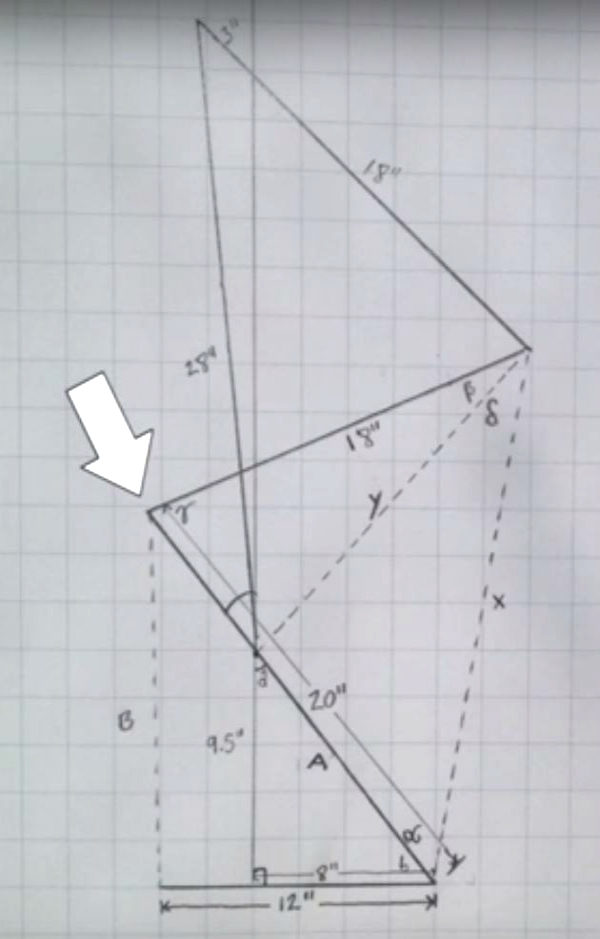
Breaking it down further, the angle of the knee is what is responsible for this increased leg drive from the floor. By wearing a raised heel, the angle formed between the femur and the tibia is able to shrink by roughly 5 degrees. By doing so, more quad activation can be achieved during the initial phases of the deadlift.
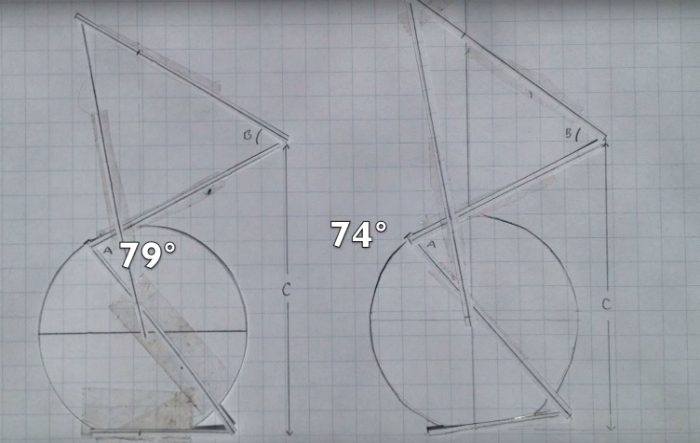
Furthermore, the angle formed between the femur and torso becomes larger—the torso is more upright from the beginning of the pull

And because you are able to “sit back” more while wearing olympic shoes, the starting hip height is virtually the same.
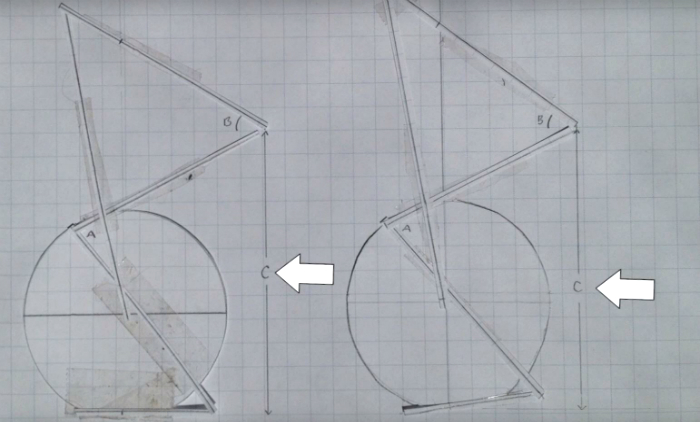
In conclusion, three benefits are to be gained by using them instead of flat powerlifting shoes:
- More quad activation providing increased leg drive
- More upright torso providing increased him drive
- No appreciable difference in starting hip height
With that said, this does not apply for everyone! The video published by Massthetics included just 1 person and were based off of their individual limp lengths, positioning, and biomechanical leverages.
https://www.youtube.com/watch?v=BK1a6VHQTHQ
So how do you know if you should use them?
If you have trouble with your initial pull off of the ground, they may suit you better than a flat shoe. However, they should be viewed more so as a training tool to help you become better at driving off of the ground—at which point you would switch to a flat shoe to shorten the range of motion during actual competition.
As with squat shoes, the best answer is to try both options and see which works best for you.
Bench Press Powerlifting Shoes
No article on strength footwear would be complete without covering the bench press. Luckily, picking the right pair is quite easy when compared to the complexity of choosing footwear for the other two lifts.
There are two main categories which will determine your needs, and they both revolve around which federation you plan to compete in.
- Heels off the ground
- Heels on the ground
The USAPL and IPF requires the full foot to be in contact with the ground. This can make it harder to build strong arch during the bench press setup. Not to worry, however. If you compete in either of these federations the most common solution is to simply use a raised heel.
This will allow for full contact with the ground while also allowing for a larger arch. Keep in mind, however, the maximum-allowed heel height during IPF competitions is 5 centimeters (roughly 2 inches). Almost all weightlifting shoes will fall within this range, but it is still a good idea to check.
If you are lifting in a federation that doesn’t require full foot contact, a flat shoe will perform just as well. It is likely that you may have a pair of olympic shoes for the other lifts, though—it is worth testing them out as many find the increased stability to be a large advantage.
Best Powerlifting Shoes
Now that you understand what makes up a good piece of footwear, the next step is actually selecting which pair (or pairs) to buy. With so many options from countless brands, it can seem like an overwhelming task.
Luckily, by knowing the distinct features, benefits, and drawbacks of each it doesn’t have to be. We have broken down the very best by several categories to ensure you end up with only the finest gear.
Men’s Powerlifting Shoes
In the men’s section there are several options to choose from.
- Reebok Legacy Lifter (22mm heel): largest heel available for exceptionally tall or immobile powerlifters
- Nike Romaleos (19mm heel): standard tall heel, chunky and larger base than the Adipowers—best suited for wide feet
- Adidas Adipowers (19mm heel): standard tall heel, thinner and more nimble than the Romaleous—best suited for thinner feet and a more agile feel; make sure to order these powerlifting shoes a half size down
- Pendlay Do-Win (19mm heel): standard tall heel, cheapest 19mm option
- Adidas Powerlifts (15mm heel): small heel with a large base
- Converse Chuck Taylors: classic flat powerlifting shoe and the cheapest option besides slippers
- StrengthShop Deadlift Slippers: hard rubber bottom with minimal sole to provide a strong contact with the ground
Women’s Powerlifting Shoes
Women’s powerlifting has grown tremendously in recent years. Along with that has been a surge of footwear options specifically tailored towards the anatomical needs of female feet. Many new color and style options have emerged as well.
There are several key differences in female feet when compared to males.
- Women tend to have a wider forefoot
- Women tend to have a shorter arch length and shorter phalanges (toes)
- Women tend to have thicker ankles
For these reasons, a wider shoe style often fits the best. Nike Romaleos are known for being wider—give these a try first and foremost if you are looking for a raised heel shoe. Additionally, they come in several different color flavors to match with your other gear.
If you are looking for a flat-soled option, chuck taylors and slippers should be high on your list.
Nike Powerlifting Shoes
When it comes to the absolute best footwear you can buy, Nike powerlifting shoes are often hailed as king. Their signature model is the Nike Romaleos which comes in several different styles—way more than some other brands. If style and coloring is important to you, this is definitely one to check out.
With all of the great things about Nike, make sure to check out Adidas Adipowers as well. How do you know which to pick of the two?
- If you have a wider foot go with Nike
- If you have a thinner foot go with Adidas
Additionally, it is important to point out that the Romaleous have a bulkier feel while the Adipowers have a more agile feel. If you like the larger, robust feel then you will enjoy Nike more. If you like a more agile feel then you will prefer Adidas.
You won’t be disappointed. Even better, consider ordering both to test them and simply return the ones you don’t like. Unfortunately, as mentioned above if style is important to you Romaleos provide much more variety.
Adidas Powerlifting Footwear
As one of Nike’s largest competitors in the realm of lifting gear, Adidas powerlifting shoes are viewed highly for several reasons. Explained above, they cater to a more narrow foot but also provide a slightly-shorter heel when compared to the Romaloes. For this reason, they are often used by quad-dominant squatters who squat more efficiently in an upright position (for both high bar and low bar squats alike).
Both brands are made with high-quality materials and display excellent craftsmanship and can be expected to last several years even with heavy use. It’s hard to go wrong with either unless you have exceptionally wide or narrow feet, as explained above.
Metal Powerlifting Shoes
The only flat powerlifting shoe with a metatarsal strap, Metal powerlifting shoes are the first choice of legendary Jim Wendler who mentions them from time to time.
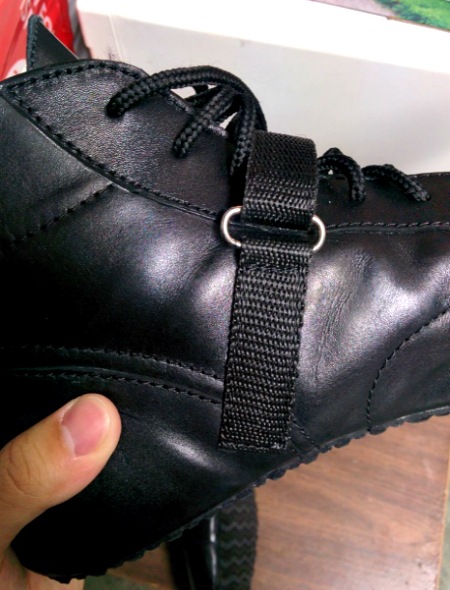
The only flat powerlifting shoe with a metatarsal strap.
The upper part of the shoe is made of leather, though not very thick. They come in a high top style and fully cover the ankles. The sides of the shoe are a completely separate piece of leather than the front of the shoe (toe box); this unique design helps to alleviate any pressure points from developing and allows the shoe to better form to your foot—even when laced up extremely tight.
They also have a very solid, grippy sole to ensure your feet stay planted while performing sumo deadlifts and squats.
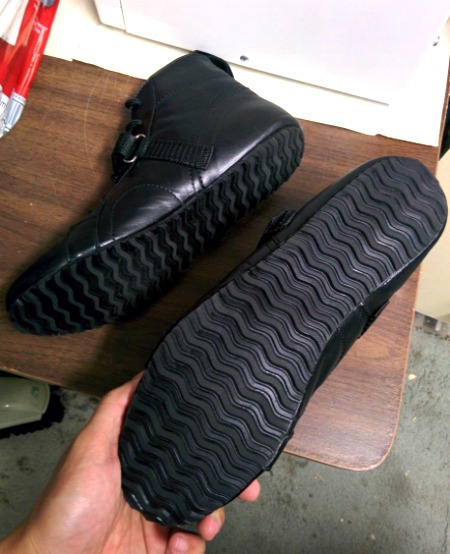
In order to get you as close to the floor as possible, the shoe does not come with any form of insole and instead uses an extremely thin layer of padding which is sewn into the boot.

When compared to the SABO deadlift shoe, these provide a much more solid and “locked in” feeling. That extra stability goes a long way but also comes with a larger price tag—Metal is about twice as expensive as SABO. On the plus side, shipping is free.
Lastly, some reviewers have noted that the shoe is best suited for a wider foot.
Keep in mind, however, that most lifting footwear can be worn for a very, very long time if you treat them with kindness and perform basic maintenance (don’t let them get obscenely dirty).
High Top Powerlifting Shoes
If you are looking for high top powerlifting shoes specifically, you have three solid options to choose from, in order from least to most expensive.
- Chuck Taylors
- SABO
- Metal
If you’re looking for an example of a strong powerlifter who uses SABO, check out Jonnie Candito. He has used them for years and seems to swear by them.
Flat Powerlifting Shoes
If you are looking for a completely flat powerlifting shoe, you’re not alone. By getting your feet as close to the ground as possible (no heel), you can maximize your force output without having to pull or push the bar an increased distance.
The options for a flat shoe are very similar to the options for high tops—in fact, they are exactly the same except there is the addition of slippers.
In order from cheapest to most bank-breaking:
- Slippers
- Chuck Taylors
- SABO
- Metal
Because slippers are so cheap, it is worthwhile to purchase those and a pair of shoes (one of the other three options) to test them both out. Worst case scenario, you spend a few extra minutes sending them back for a refund. Best case scenario, you find that you enjoy slippers the most—they are dirt cheap comparatively.
Cheap Powerlifting Shoes: Chuck Taylors
If you are looking to find the absolute cheapest powerlifting shoes, Converse Chuck Taylors are the answer. However, keep in mind that the sole is compressible and thus makes them not the most ideal option possible.
If you are able to, strongly consider waiting and saving a bit more to buy one of the options outlined above. With proper care and maintenance (simply keeping them clean and stored in a dry place), lifting shoes can last you a decade or longer even with heavy use. It is best to think of any piece of powerlifting gear that you buy as an investment towards your long-term progress.
However, if you are truly looking for the cheapest footwear to cover your feet, you can grab a pair of deadlifting slippers for less than twenty dollars—that’s hard to beat.
